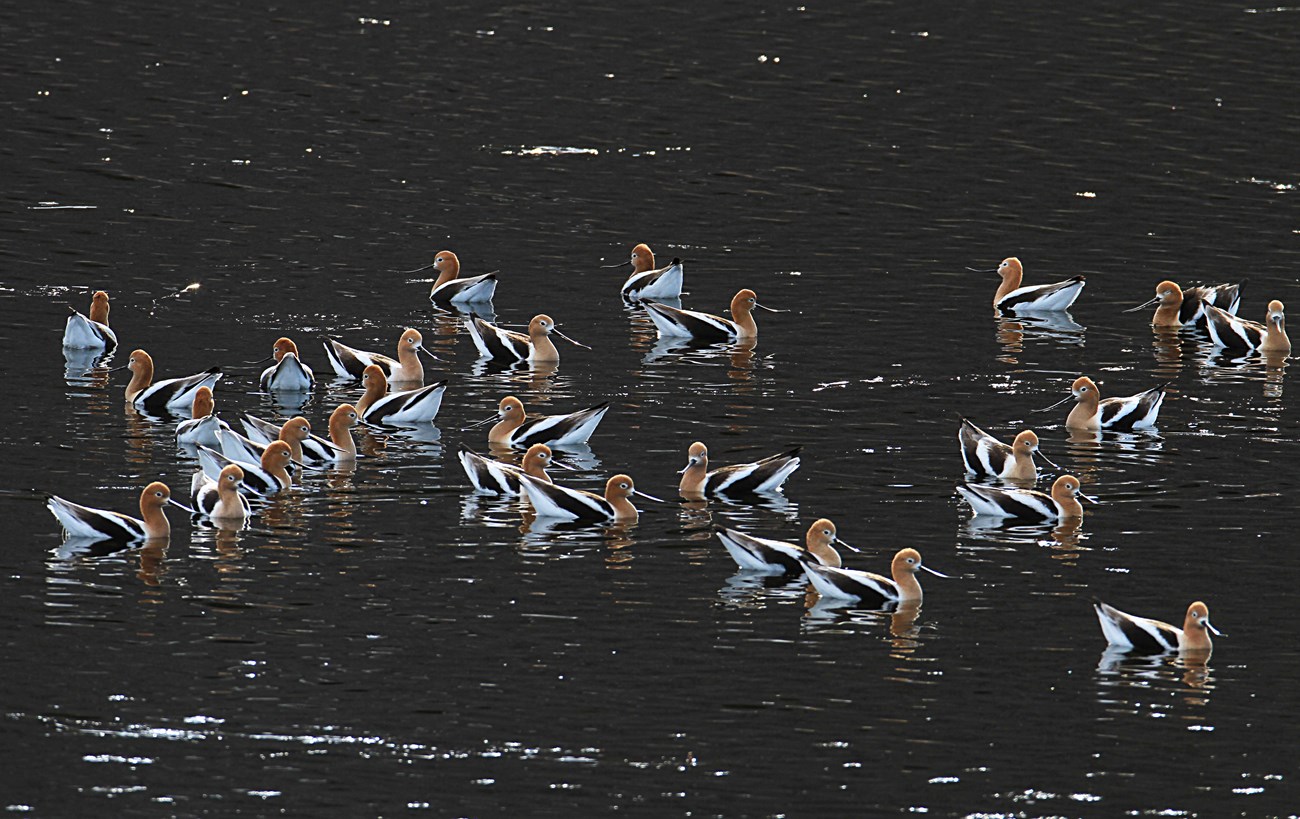Last updated: July 23, 2024
Article
Birds and Observing Them

NPS/Jim Peaco
Birds are found just about everywhere. Even when you can’t see them, you can often hear them. Bird diversity changes depending on location and season. Birds can be enjoyed in so many different ways: watching their activity, listening to their songs, noting their plumage, or capturing their likeness through art.
What are Birds?
Birds are animals that have these characteristics:

Bills
You can learn a lot about a bird just by looking at its beak. Eagles, hawks, and owls have strong, hooked beaks for tearing meat. Woodpeckers’ chisel-like beaks drill into wood.
A duck’s flat beak excels at straining food out of mud, while a great blue heron’s works like a fishing spear.

Nests
Birds are engineers who build their nests to be invisible, inaccessible, or impenetrable. Thus, they improve the survival of eggs, chicks, and parents. Nests can be more than woven bowls in trees. Kingfishers dig burrows and woodpeckers chisel tree cavities. Some birds even nest together.

Eggs
Birds are born from protective hard-shelled eggs, which require substantial energy to make. The shell holds and protects the embryo and its nutrients. The mother does not carry her young inside her, so both parents can gather food and protect the nest while they wait for their chicks to hatch.

How to Observe Birds
The most important traits you need for birdwatching is patience. Practicing patience—the ability to wait quietly and mindfully—will improve your bird-watching greatly. You’ll gain the ability to recognize different birds and patience gives you the chance to learn more about these fascinating creatures.
Where to Look Birds can be found just about anywhere, though here are some places to check out:
- Trees: Most birds are tree-dwelling
- Poles or treetops: Raptors especially perch on high vantage points
- Water: Many bird species can be found on or around rivers and lakes
- Wetlands: Many birds are at home in marshes and wetlands
- Beaches: In summertime, shorebirds raise their young and forage for food
When to Look Many birds migrate to different places throughout the year, wintering in a different location from where they raise their young.
- Spring: Nesting birds prepare their nests and lay their eggs
- Summer: Adults hunt for food and watch over young
- Fall: Migraters depart for winter areas
- Winter: Ducks and geese are common along flowing waterways
Tips
- Wear comfortable clothes
- Be still: find a good place to sit or stand so you don’t scare the birds away
- Take time to observe birds: the more you look, the more you’ll notice
- Their call or song
- Their silhouette
- Their flight pattern
- Their location
- Their behavior
- Their size
- Their coloration (beaks, feet, feathers)
- Their special markings
- Their shapes (beak, head, body)

Birding Kit
Observing birds doesn’t require special equipment. Even without binoculars or spotting scopes, you can observe birds and their behaviors or listen to their songs.
Here are some items to consider taking on your expedition:
- This handout and Healing Wings
- Binoculars
- Notebook and writing instrument
- Field guide for identifying birds
- Bird checklist
- Birding apps
- Merlin Bird ID
- eBird
- iNaturalist
- Food and water for yourself (Please don’t feed birds in the wild)

Activity
Where have you seen birds before? List and provide detail to as many places as you can think of.
List as many birds as you can think of.
Watch a bird for five minutes and describe what you observed. Pay attention to:
- Size
- Behavior
- Location
- Feather colors and markings
- Beak and feet shapes and colors
- Tail shape and size
- Flight pattern
- Call or song

A program where you can learn more about birds and lend a hand to help protect them.
